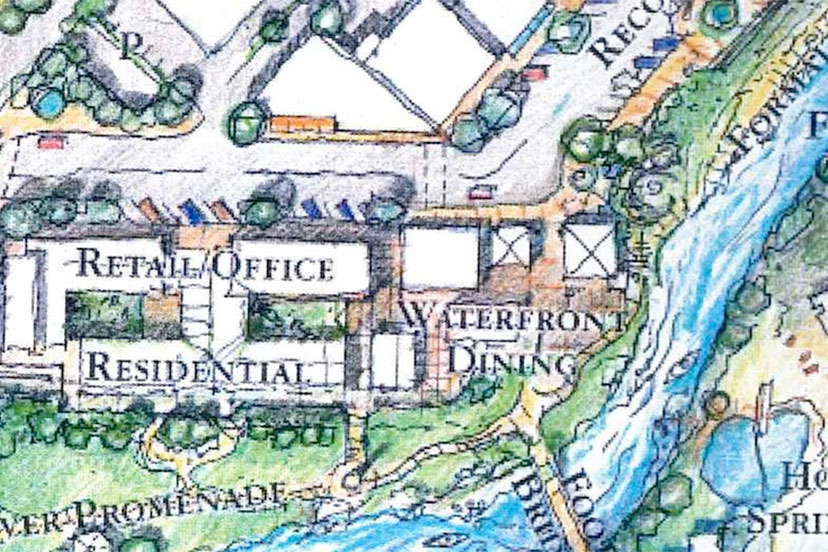The controversial ‘density bonus’ proposal for 232 Pagosa Street has brought up a number of important issues, when you dig into the assumptions behind the development’s design…
…and we’ve discussed many of them previously, in various Daily Post articles.
As already noted, the density bonus request was denied by the Town Council on February 7, by a 5-to-2 vote.
On Monday, I plan to address the lingering parking issues that the proposed development has been dealing with. But for today, let’s talk about ‘bigger is better’. Because the mass and bulk of the proposed building has been one of the more controversial issues, thus far.
Back in 2017, a consulting group calling itself Smart Growth America (“Improving lives by improving communities”) paid a visit to Pagosa Springs and studied our local development patterns, and suggested ways to a brighter future. The consultants were paid through an EPA Office of Sustainable Communities grant, and grants from USDA Rural Development. This was six years ago.
After talking with the Town Planning Department… and holding a community workshop…
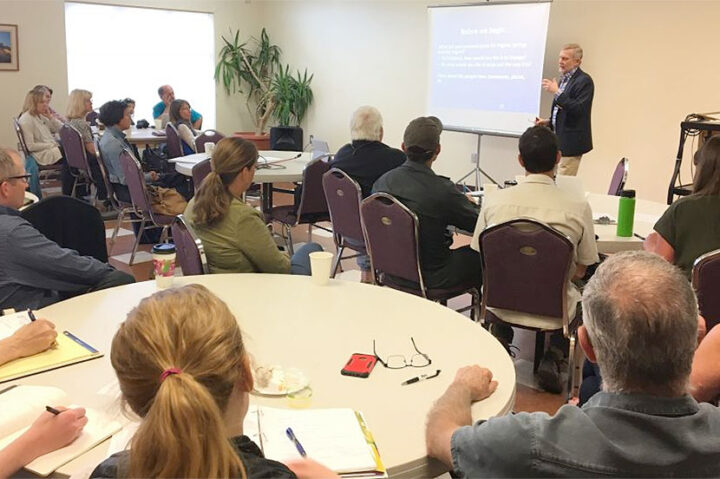
… the consultants came up with several recommendations, including the following: (to which I have appended my own observations):
Invest in techniques to encourage placemaking and streetscaping in downtown – including taking advantage of the Highway 160 redevelopment project – to establish a more cohesive sense of place. (Quite frankly, I have no idea what a “cohesive sense of place” might mean.)
Develop a sense of place in uptown. (Ditto. No idea what this means.)
Market the town amenities and lifestyle to bring new residents, economic opportunity, and visitors to town. (This will be discussed below.)
Invest in broadband Internet access to attract both new residents and new types of businesses. (This will be discussed below.)
Look for opportunities to increase affordable housing within and connected to downtown – including for Millennials and an aging population – along with the complementary services required to meet daily needs. (The Town is struggling with this idea, as are the rest of us.)
Work to coordinate Town of Pagosa Springs and Archuleta County services and policies wherever possible. (Not much headway has been made towards collaboration, as far as I can tell.)
As I understood the essential message from the Smart Growth America consultants, during their lectures about Pagosa’s continued economic viability, the advice was “steer away, aggressively, from a suburban sprawl development pattern… if you want your local governments to remain financially stable”. One of the key problems with the ‘suburban development pattern’: because the homes are spread out over a relatively wide area, they do not generate enough tax revenue to cover the cost of the necessary infrastructure, and thus, suburban communities are destined to put their governments deeper and deeper into debt.
Which means, “promote the downtown (and uptown?) urban cores as the best locations for future development.”
Our marketing efforts ought to be aimed at bringing in “new residents, economic opportunity, and visitors to town.” Right? With increased “affordable housing within and connected to downtown”.
The proposed development at 232 Pagosa Street is clearly not aimed at producing affordable housing, even though we are in a crisis situation. But it might end up bringing in “new residents”. We might assume these “new residents” would be from a wealthier class of people, to judge by the drawings we’ve seen so far.
The three parcels which this theoretical building would occupy…
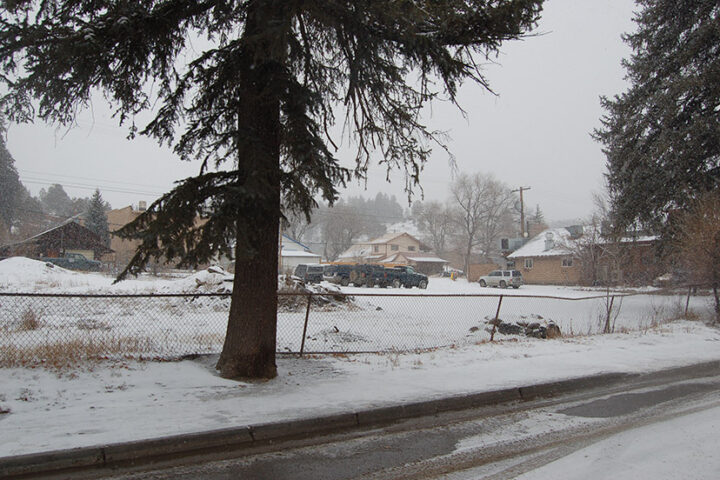
…could easily accommodate some affordable housing.
In fact, these parcels did previously accommodate typical Pagosa housing, until those homes were demolished, in 2006, by developer David Brown. Mr. Brown and his consultants envisioned Pagosa Springs’ downtown as a vibrant future tourist resort, and his concerted effort to demolish older buildings along Highway 160 was part of that planned redevelopment.
He had some success getting other people to embrace his vision, but he did not live to see the vision fulfilled.

As I recall, Mr. Brown’s vision did not include housing. I guess he figured that a vibrant business/tourism economy would automatically generate enough workforce and retiree housing.
Thanks to many decisions by local governments and developers, Pagosa Springs built out in a financially unsustainable suburban pattern. For one thing, the Town established land use regulations that discouraged large, dense buildings within the downtown. For another thing, the County government approved one suburban subdivision after another, and happily assumed the obligation to maintain the roads leading to those distant (unsustainable) neighborhoods.
Read today’s op-ed by Ben Abramson, “Colorado Subdivisions Drowning in Debt” for more insights into unsustainable development.
And as we have seen, the production of housing to accommodate the workers needed for a resort/tourism economy didn’t automatically happen.
Instead, the cost of housing slowly spiraled completely out of reach for most working families.
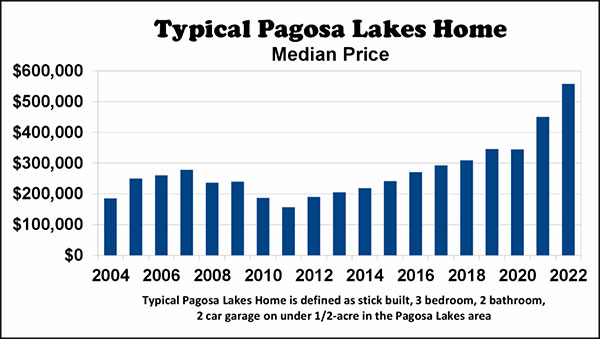
While this price spiral was taking place, the state of Colorado and our local governments were spending millions of taxpayer dollars subsidizing the local broadband industry… and the local tourism industry…
Yes, the Daily Post is completely dependent on the Internet. And I assume we all want to watch Netflix on the weekend…
And we all love seeing the happy tourist families enjoying the San Juan River in July.

But have the government investments into broadband and tourism produced a sustainable economy? Doesn’t seem like it… from the perspective of 2023.
As much as I love my funky, eclectic downtown neighborhood with its mix of smaller homes dating from 1900 into the 2020s, I don’t know that we can expect our town to survive, unless we embrace new ideas. Perhaps even, radically new ideas.
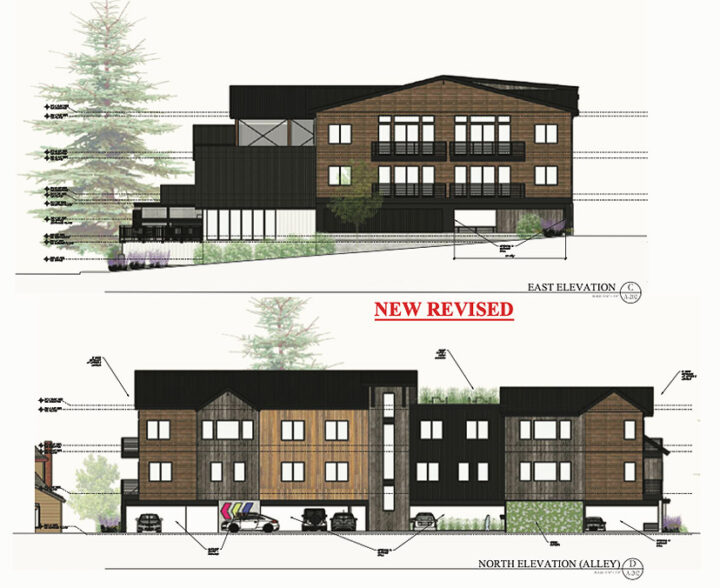
Is the proposed, very large building at 232 Pagosa Street, an example of the type of development that can ‘save’ Pagosa Springs?

